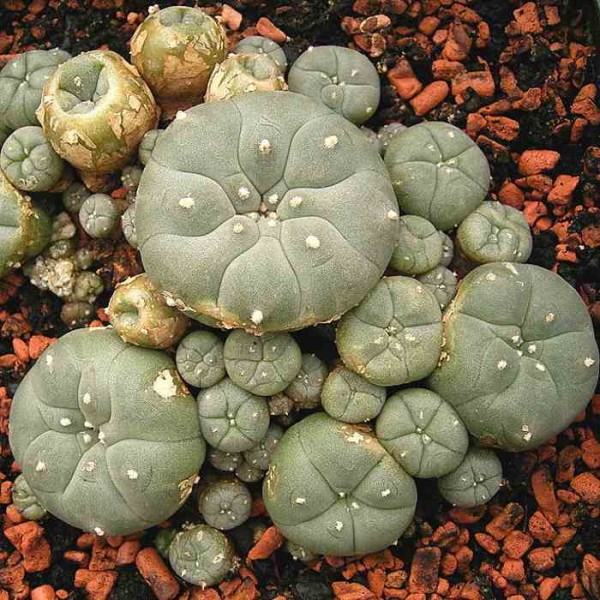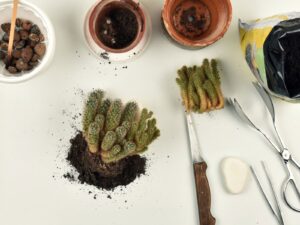Understanding the legal framework surrounding the peyote cactus (Lophophora williamsii) seeds is critical for anyone interested in this unique plant. Peyote has a storied history, not only as a traditional sacrament used in Native American spiritual ceremonies but also as a subject of legal scrutiny due to its psychoactive properties. In this article, we will delve into the complexities of the legal status of peyote cactus seeds while considering their implications for enthusiasts and cultivators.
Before purchasing or propagating peyote seeds, it is essential to discern the legality surrounding them, as laws can vary significantly between regions and countries. This discourse will explore various dimensions: the historical context of peyote use, the legality of cultivation, and the implications of its psychoactive components.
Historical Context of Peyote Usage
Peyote cactus has been revered for thousands of years by indigenous cultures, especially those in North America. The small, button-like tops of the cactus contain mescaline, a hallucinogenic compound that has been used in traditional ceremonies to induce altered states of consciousness for spiritual and healing purposes. This cultural significance cannot be underestimated, as many tribes consider its use a sacred rite, integral to their religious practices. Consequently, in recognition of the peyote cactus’s vital role within these communities, the legal landscape has evolved, albeit with complexities.
In the early 20th century, the growing awareness of peyote’s psychoactive properties spurred regulatory measures. Legal efforts aimed to control or restrict peyote use emerged, culminating in the Controlled Substances Act of 1970 in the United States. This act classified peyote as a Schedule I controlled substance, largely banning its use outside registered religious contexts.
Today, the legal framing surrounding peyote seeds rests on the balance between cultural importance and regulatory caution. Several states in the U.S. have tailored their laws to allow Native American Church members to use peyote, acknowledging their religious practices while enforcing stringent controls over distribution and cultivation.
Legality of Cultivating Peyote Cactus Seeds
One of the most critical questions regarding peyote cactus seeds centers around their cultivation and possession. In the U.S., the legal status of cultivating and selling peyote seeds can vary widely depending on state legislations. In many areas, while the consumption of peyote is restricted, there may not be explicit laws prohibiting the cultivation of the plant itself. However, the seeds’ legal status often mirrors that of the mature cactus. Thus, in states where the possession of peyote is illegal, so too are the seeds that can produce this entheogenic plant.
Some jurisdictions have taken progressive stances where peyote cultivation is concerned. For instance, certain areas permit cultivation for designated religious purposes. This means that individuals affiliated with recognized organizations may find ways to legally grow peyote for use in spiritual practices. However, this often comes with a labyrinth of regulations, requiring permits and some level of documentation concerning how the peyote will be utilized.
Moreover, those outside indigenous groups wishing to grow peyote must navigate a convoluted legal landscape. Potential cultivators should consider seeking legal counsel and thoroughly researching their state laws before proceeding. Failing to comply with regional regulations can lead to serious legal consequences, especially given peyote’s classification as a controlled substance.
Implications of Psychoactive Properties
The psychoactive properties of peyote present another layer of complexity in its legal status. The mescaline contained in peyote is known for inducing vivid hallucinations and altering perception, experiences that are captivating yet require careful consideration regarding safety and legality. Many individuals remain unaware that while seeds may not always be scrutinized as heavily as the plant itself, the ramifications of cultivating such seeds are profound.
As psychedelics gain renewed attention for their therapeutic potential, the stigma surrounding their use is gradually diminishing. Promising research indicates that mescaline and other psychedelic substances may offer healing properties for various mental health conditions. However, this is contingent upon proper medical oversight and legal acknowledgment, which remains sparse for peyote.
While there is a burgeoning movement advocating for the decriminalization or even legalization of psychedelics, peyote’s historical status complicates this dialogue. Ethical concerns surrounding indigenous rights and the exploitation of peyote by non-natives remain at the forefront. Advocates argue that preserving the cultural integrity of peyote use is paramount and that legal measures should reflect respect for indigenous traditions.
Conclusion: Navigating the Legal Labyrinth
In conclusion, while the appeal of cultivating Lophophora williamsii seeds may enthrall many enthusiasts, the legal status of these seeds necessitates careful navigation through local laws and regulations. Understanding the historical context of peyote usage, the current state of cultivation legality, and the implications of psychoactive properties are all crucial in determining how or whether to engage with this remarkable cactus.
For those genuinely interested in exploring the cultivation of peyote cactus seeds, responsible engagement and respect for its cultural heritage are essential. The legal landscape is ever-evolving, and continuous dialogue around the significance of peyote will likely shape future policies. It is wise to remain informed and respectful in this intriguing intersection of culture, legality, and botany.





Leave a Comment